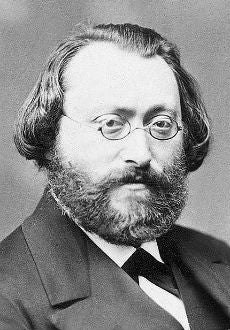 Max Bruch was born in Germany in 1838. From an early age he studied music, and wrote his first composition at the age of nine: a song for his mother’s birthday. His parents then eagerly supported his musical passions. He went on to have a long career as a teacher, conductor, and composer.
Max Bruch was born in Germany in 1838. From an early age he studied music, and wrote his first composition at the age of nine: a song for his mother’s birthday. His parents then eagerly supported his musical passions. He went on to have a long career as a teacher, conductor, and composer.
His orchestral works include three symphonies and three suites. He composed four operas and numerous lieder (songs) and choral works. He wrote many pieces for strings, such as chamber works or concertante pieces for violin, viola, and cello. One of his most well known pieces is the first of three violin concertos he wrote, his opus 26 in G minor. However, this piece’s fame began to haunt him, as it was remarkably better known and received than the others, and he feared that he was a one-hit wonder.
Another one of his very well-known pieces is his Scottish Fantasy for violin and orchestra. Each movement is based on popular Scottish folk melodies. The first movement is an Adagio cantabile fantasy on a tune known as “Auld Rob Morris” or “Through the Wood Laddie”. This tune displays a popular rhythmic pattern reminiscent in Scottish dance music, and this tune makes a reappearance in the second and fourth movements as well. The second movement is a scherzo built around the tune “The Dusty Miller”, and the third a fantasy on “I’m A’ Doun for Lack O’ Johnnie”. The fourth movement, the finale, contains a sprightly arrangement of “Hey Tuttie Tatie”, the tune in an unofficial patriotic anthem of Scotland, “Scots Wha Hae”.
Text taken from the LIVS archives.
Below is a performance of Scottish Fantasy by The Royal Conservatory Orchestra, conducted by Tania Miller, with soloist Heidi Hatch.



Leave a comment